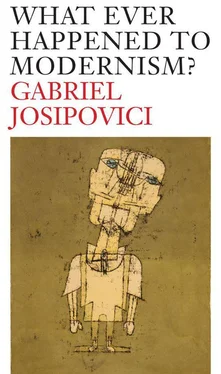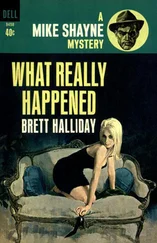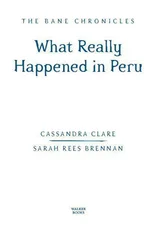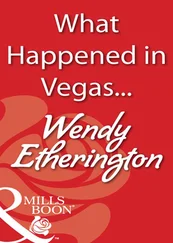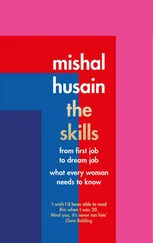9. Fernande Has Left With A Futurist
What Rosalind Krauss discerns as happening in the Picasso collages of 1912–13 is a key moment in Modernism's understanding of itself, not just a moment in Picasso's personal odyssey. For it is the moment when artists grasped that what they were producing were signs or emblems for the external world, not mirrors reflecting it. With that insight, however, as Rosalind Krauss realises, a new abyss yawned: is art then nothing but the circulation of signs?
Picasso's hatred of Futurism and of abstraction is well documented. As always with these things motives are mixed and strongly held views overdetermined. Krauss quotes a letter from Picasso to Braque in May 1912: ‘Fernande has left with a Futurist. What am I going to do with the dog?’ But, as she shows, personal pique connected with his loves, wounded pride at feeling that he, the torchbearer of the Modern, was being outflanked on two sides and starting to look distinctly vieux jeu , and a deeper, more purely artistic instinct, all played their part. ‘The avant-garde had moved on in the early teens and was now lying in wait for cubism’, she writes. ‘It had other tricks up its sleeve, not the least of which was pure abstraction on the one hand and the photomechanical conception of art — in which the readymade combines with the photograph — on the other.’ But Picasso clearly loathed the idea that Cubism should be thought of as ‘non-objective art’, just as he hated the notion that it had opened the way for the mechanical strategy of the readymade as Duchamp and Picabia were busy developing it.
Picasso turned his back on both abstraction and the mechanical, returned to his study of late Cézanne, and began, in the years that followed, to move towards what came to be called Neoclassicism. His disciples never forgave him. It was in those years, 1915–20, that the label of pasticheur , which has clung to him ever since, was first attached to him. Marinetti, Picabia, Rodchenko, Malevich, Mondrian — they were the purists, who saw how things were and drew their stern conclusions. Picasso seemed to be lost in a venture that was at once bourgeois and retrograde, suggesting in retrospect that even in Cubism, the one ‘movement’ he claimed all his life to have been his invention, he was only imitating others, in this case Braque.
However, in the light of Picasso's entire artistic career such a view, though maintained by critics with an axe to grind, like John Berger, has to be drastically revised. We can now see what Picasso was after, all along, in his insistence that it was the world he was interested in as much as art, and in his denunciation of Futurism, abstraction and the photomechanical production of art. As Leo Steinberg and others have shown, he went on till the very end exploring possible ways in which the multiple voices could be kept in play, and if he had dips in form or went down blind alleys then that is what engaging with the world through art is about. Rosalind Krauss is coy about the degree to which she believes that the charges of pastiche levelled at Picasso since that time are justified, and the degree to which she feels that he did indeed lose his way. But in her questioning of Berger and of his mentor Adorno, whose Philosophy of Modern Music she rightly sees as articulating most clearly the case against both Stravinsky (its immediate target) and Picasso, she is, as usual, both perceptive and profound. ‘It is the historical logic of modernism’, concludes her wonderful book on Picasso, that ‘the newly liberated circulation of the token-sign always carries as its potential reverse an utterly devalued and empty currency. Pastiche is not necessarily the destiny of modernism, but it is its guilty conscience.’
Duchamp was the only other artist apart from Picasso to grasp this, so that actually to align him with Picabia and the new mechanisation of art is to do him an injustice. More clearly even than Picasso (he was the more cerebral artist), Duchamp understood what was at stake in the crisis of authority and tradition that had engulfed the arts in the last years of the nineteenth century, what it meant that ‘the newly liberated circulation of the token-sign always carries as its potential reverse an utterly devalued and empty currency’. In an interview with Georges Charbonnier in 1961 he summed up his position with his customary wit:
The word ‘art’, etymologically speaking, means to make, simply to make. Now what is making? Making something is choosing a tube of blue, a tube of red, putting some of it on the palette, and always choosing the quality of the blue, the quality of the red, and always choosing the place to put it on the canvas, it's always choosing. So in order to choose, you can use tubes of paint, you can use brushes, but you can also use a ready-made thing, made either mechanically or by the hand of another man, even, if you want, and appropriate it, since it's you who chose it. Choice is the main thing, even in normal painting.
In the old days the painter had been a craftsman, almost an alchemist. He alone knew how to mix the paints that led to his special effects, it was something that had been passed down to him from the master to whom he had been apprenticed, often his father, and he would in turn pass it on to his sons or apprentices. Once artists were able to buy paint ready-made in tubes open-air painting became possible, but something had also been lost (as with the coming of print for writers). The nineteenth century had seen a growing awareness of what was implied by choice, both in life and in art, and desperate attempts both by sensitive individuals and by ever more self-conscious artists to escape its arbitrariness. But ‘Un coup de dés jamais n'abolira le hasard’, and Duchamp draws the inescapable conclusion: since all art is choice and all choice is in the end arbitrary, a mere throw of the dice, why not face up to this fact, make one big choice right at the start and leave it at that? (Had not Kierkegaard's wise Judge in Either/Or made that the prescription for happiness?)
Of course, as we have seen in the case of Picasso, these things are always overdetermined. Though Duchamp made a big splash with his painting, Nude Descending the Stairs , the shock success of the Armory Show of 1913, he had never been much of a painter, so it is perhaps no surprise that in the years following that success he abandoned painting for ever and took up the idea of the readymade, first with his Bicycle Wheel (1913) and Bottle Rack (1914), and then, in 1917, with his most famous work, the urinal he called Fountain . On the other hand it could be argued that he had never been very good at painting only because he had always been suspicious of it, had sensed from the start, what he was only to articulate much later, a deep suspicion of the whole enterprise of easel painting. Who can tell? (Who can tell why some sinners repent and others do not, some addicts manage to kick the habit and others do not?) In any case, as his most discerning critic, Thierry de Duve has shown in fascinating detail, the story of Fountain is a kind of parable, largely orchestrated by Duchamp, of the nature of art in our age. Readers of literature, eagerly snapping up the latest Goncourt or Booker Prize winner would do well to ponder its implications.
Duchamp submitted Fountain anonymously (he ‘signed’ it ‘R. Mutt’) to the hanging committee of the first exhibition of the American Society of Independent Artists, on whose jury he himself was. The society based itself on the Parisian society of the same name (the Salon des Indépendants) set up in 1884, to wrest control of the future of art from the Academy. In both cases the motto was the same: No jury, no prizes. In theory anyone could hang, for why should I, an independent artist, submit to the judgement of a jury of straight-laced traditionalists who wouldn't be able to discern good art if it was thrust into their faces? Duchamp had been invited onto the committee because of the triumph of his Nude at the Armory Show. His presence guaranteed the Independents' avant-garde credentials. Unfortunately neither life nor art is ever as simple as that. What the Independents of New York wanted was to be both liberal and avant-garde, to do what they wanted and have themselves proclaimed as important avant-garde artists. We have seen what such self-naming leads to in the case of Don Quixote and others. It was no different here. The Cervantes who drew the right conclusions from their efforts was, of course, Duchamp. By submitting not a new version of the Nude , but, anonymously, a signed urinal, he lit up, as with a flare, the contradictions of art today: for Fountain was, as everyone knows, rejected by the committee as obscene and ‘not art’.
Читать дальше
